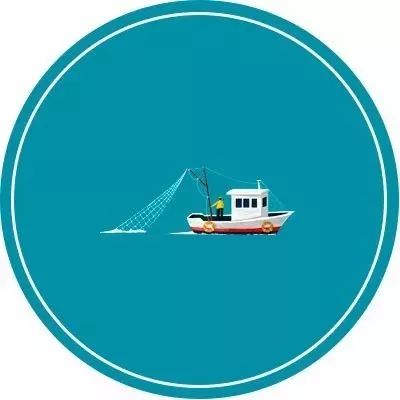
SOME lawmen chase villains down mean streets. Others chase fraudsters across balance-sheets. In the stomach-churning stench of the Vetport at John F. Kennedy International Airport, yet others donsurgical masks, goggles and rubber gloves, and peer with penlights into cratesholding thousands of little birds.
有的执法官在城市中犯罪高发的贫民区追逐坏蛋,有的执法官在资产负债表中寻找诈骗犯。然而,在肯尼迪国际机场的动物服务中心,其他的执法官则在令人反胃的恶臭中,戴着外科口罩、护目镜和胶皮手套,用笔形手电照进板条箱,费力地向里面看,里面装有数千只小鸟。
These inspectors with the Fish and Wildlife Service (FWS) examine not just live animals entering America—such as the 45 outlaw jays they found lurking in a legal shipment of thousands of birds—but plants and animal products such as handbags and caviar. In 2011 FWS agents raided Gibson Guitar facilities in Tennessee and seized wood worth hundreds of thousands of dollars that they suspected had been illegally imported from Indiaand Madagascar.
这些美国鱼类及野生动物管理局(
Fishand Wildlife Service
)的检查人员不仅检查进入美国的活体动物(比如他们发现的躲藏在一个合法的货物装载中的
45
只经过非法偷运的松鸦),还有动植物产品,如手提包和鱼子酱。
2011
年,该组织的特工突然搜查了设于美国田纳西州的吉普森吉他公司的工厂,结果搜到了价值数十万美元的木材,他们怀疑这些木材是从印度和马达加斯加非法进口的。
The buyers may be besotted ornithophiles,air-brained fashionist as or greedy gourmets. But the sellers are crooks, supplying a market which, according to America’s Congressional Research Service, is worth as much as $133 billion annually. Commodities such as rhinohorn and caviar offer criminals two benefits rarely found together: high prices and low risk. Rhino horn can fetch up to $50,000 per kilogram, more than goldor the American street value of cocaine. Get caught bringing a kilogram of cocaine into America and you could face 40 years in prison and a $5m fine. On January 10th, by contrast, a New York court sentenced a rhino-horn trafficker to just 14 months.
买家可能是痴迷的鸟类爱好者,异想天开的时尚达人,抑或是贪婪的美食家。但卖家则是些骗子,根据美国国会研究局,这些骗子每年供给市场的货物价值多达一千三百三十亿美元。像犀牛角和鱼子酱这样的货物给犯罪者提供了双重好处:高收益和低风险,而这两项好处很少能兼得。犀牛角每千克可卖出五万美元,这比金价和可卡因在美国黑市的价值还要高。如果有人携带一千克可卡因进入美国,并被捉捕,可以判蹲四十年监狱外加五百万美元罚款。相反,今年
1
月
10
日,对于一名犀牛角走私贩,一纽约法庭只将其判了
14
个月。
The appeal of such trade is increased,however unwittingly, by governments trying harder to protect what is precious and rare. “When we finally get it together to agree that we’ll only take ten tuna out of the water this year because that’s all we can afford to take, that 11th tuna will be worth a lot of money,” says Theodore Leggett of the UN Office on Drugs and Crime (UNODC). As with tuna, so with ebony, ivory and rhino horn—all being regulated more tightly, and all still desirable.
政府更加努地力试图保护珍稀物种,却无意间增加了此类贸易的吸引力。联合国毒品和犯罪问题办公室
(The United Nations Office on Drugs and Crime)
的
Theodore Leggett
说:“如果我们最终决定今年我们将只从海中捕捞
10
条金枪鱼,因为我们只能承担捕捞这么些,那么第十一条金枪鱼将会价格不菲”。尽管管理越来越严格,但像金枪鱼,黑檀、象牙和犀牛角这些东西仍旧很有诱惑力。
Organised crime is globalising and diversifying. Mono-ethnic, hierarchical mafias are being replaced by multi-ethnic networks that operate across borders and commit many types of offence. In an ongoing investigation into rhino-horn trafficking, the FWS arrested Irish travellers using indigent Texans to procure material for Chinese and Vietnamese buyers. Europol, the European Union’s law-enforcement agency, estimates that just a quarter of Europe’s roughly 3,600 organised-crime groups have a main nationality, and that some operate in dozens of countries. A third are involved in more than one criminal enterprise, with half of those linked to drug-trafficking.
有组织犯罪正趋于全球化和多元化。由单一民族组成、实行等级制度的黑手党渐渐衰落,取而代之的是跨国界活动、犯罪种类多样的多种族合作网。在一场针对犀牛角走私的不断进行的调查中,美国鱼类及野生动物管理局缉拿了一批爱尔兰游客,他们利用贫穷的得克萨斯人来获取犀牛角,并将之卖给中国和越南的买主。欧盟执法部门——欧洲刑警组织(
Europol
)估计,在欧洲大约有
3600
个有组织犯罪团伙,但其中只有四分之一是在一个国家内活动,而有些有组织犯罪团伙则在数十个国家内活动。犯罪团伙中有三分之一参与了不止一次犯罪活动,而其中一半的犯罪活动与毒品走私有关。
And though traditional trafficking indrugs, guns and people is still lucrative, gangs are increasingly moving into lower-risk, higher-reward areas—not just wildlife, but fraud and illegal waste-disposal. The UNODC says the value of cross-border trade in counterfeit goods could be as much as $250 billion a year. On January 14th it launched a campaign to tell consumers about the dangers posed by fake electronics, food, medicines and the like—and how the buyers of knock-offs enrich some highly unpleasant people.
尽管传统的毒品走私、枪支走私和贩卖人口仍旧利润丰厚,但犯罪团伙现在却越来越频繁地进入低风险、高回报的领域——不仅是野生动物,还包括非法的废物处理。联合国毒品和犯罪问题办公室表示,每年跨境伪造产品贸易额高达两千五百亿美元。
1
月
14
日,
UNODC
发起了一项活动,以告诉消费者假冒的电子器件、食品、药物和类似的产品会产生的危险,还有仿制品的买家是如何让一些十分讨人厌之人的钱包鼓了起来。
Gangs in Britain make around £9 billion ($14.8 billion) a year from tax, benefit, excise-duty and other fraud—not much less than the £11 billion they earn from drugs. In America cigarette-trafficking deprives state, local and federal governments of $5 billion in tax revenues annually. The European Union estimates that losses within its borders from cigarette smuggling, tax fraud and false claims on its fundsby organised groups total €34 billion ($46.5 billion) a year. But member statesbring fewer than ten cases each a year for defrauding the EU, and sentences tend to be light.
英国的犯罪团伙从税、收益、消费税和其他骗局中大约赚取九十亿英镑(合一百四十八亿美元),比从贩毒中赚取的一百一十亿英镑少不了多少。在美国,烟草的走私每年要使国家、地方和联邦政府减少五十亿的税收收入。据欧盟估计,从烟草走私、偷税漏税到对资金的错误占有,有组织犯罪团伙每年在欧盟境内造成的损失高达每年三百四十亿欧元(合四百六十五亿美元)。但是成员国每年只提出不到十起欺诈欧盟的案件,而且判罚也很轻。
According to the FLARE Network, an international group of campaigners against organised crime, criminal groups in Italy make around €14 billion a year from being mixed up in agriculture. In some parts of the country mafias control food production and distribution; Franco La Torre, FLARE’s president, says they also enrich themselves through fraudulent claims on EU agricultural funds. Increasingly strict regulation of waste disposal has created another profitable opportunity for organised crime in Europe—particularly, according to Europol, for the Italian Camorra, ’Ndrangheta and Cosa Nostra.
根据一家国际反对有组织犯罪的活动家组织
FLARE Network
,意大利的犯罪团伙将黑手深入农业,并每年从中获取大约一百四十亿欧元。在该国的有些地区,黑手党控制着食品生产和销售。
FLARE Network
的主席
Franco La Torre
说这些黑手党还通过欺诈性理赔这种手段骗取欧盟农业资金,从而赚足腰包。针对废物处理的规定越来越严格,然而这却为在欧洲的有组织犯罪创造了另一个有利可图的机会——根据欧洲刑警组织的调查,尤其对’
Ndrangheta
和
Cosa Nostra
这两个意大利的克莫拉黑手党组织有利。
Where politics is corrupt and lawen forcement weak, as in much of Latin America, gangsters still look much as they have for decades: brutal and keen on the brand-enhancing effect of highly visible violence. But in the rich world, the shift to new lines of business is changing the face of organised crime. The FBI estimates that the four big Italian Mafia groups still have 3,000 members and affiliates in America. But as traditional industries have shrivelled so, too, have the unions and tight-knit neighbourhoods that were once their fertile breeding grounds.
在政治腐败、执法不严的地方,比如在拉丁美洲的大部分地区,匪徒仍看起来和几十年前差不多:野蛮残忍、喜好暴力,因为暴力十分显眼,能起到很好的“品牌宣传”效果。但在富裕地区,变更的新产业线正在改变有组织犯罪的面貌。美国联邦调查局估计:在美国,四大意大利黑手党集团仍然有三千成员和支部。但随着传统工业的衰落,工会和组织严密的聚集区也日落西山了,而那些地方曾经正是他们肥沃的滋生地。
Old-style loan sharks and drug-dealers are finding a new role as distributors for the modern mobsters who manage the supply chains, marketing, finance and human resources needed to move goods, money and people across borders. “The new generation are very talented businessmen and technologically advanced experts,” says Mr La Torre. They prefer invisibility to showy violence. Many also have legitimate business interests.
老派的放高利贷者和毒品贩正在寻找新的的角色,即现代犯罪集团的经销商,他们管理跨境运输货物、资金和人员所需要的供应链、营销、财力和人力资源。
Mr La Torre
说:“新一代犯罪团伙是非常有才华的生意人和具有专业科技知识的专家”,他们更喜欢暗中操作而不是显眼的暴力行为。许多发展分子还有合法的商业利益。
Clever criminals acting across borders are extremely difficult to prosecute. They profit from gaps in enforcement and regulation, and conceal their illegal acts in complex supply chains. If a network of Nigerian scammers based in Amsterdam defrauds French, Australian and American credit-card holders, where does the crime occur? And who has the motivation, not to mention the jurisdiction, to prosecute?














